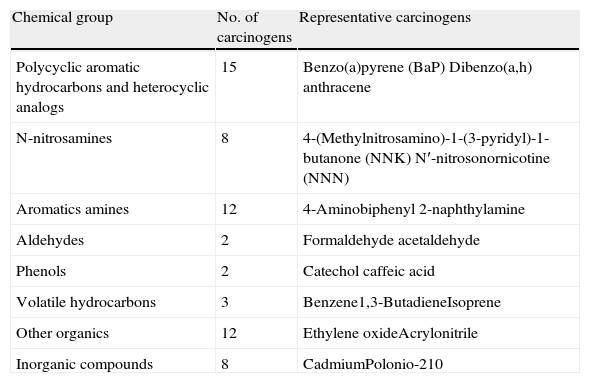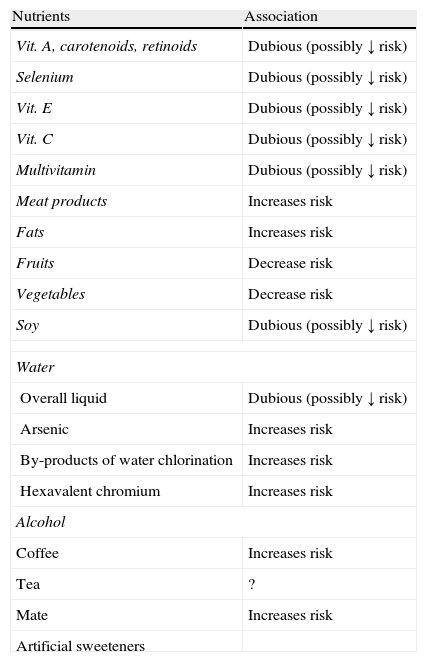Bladder carcinoma (BC), due its high morbidity and relapsing course, generates significant economic and health care costs. Accordingly, we reviewed the environmental nonoccupational risk factors (RF), more or less evidence-based, in the etiology and pathogenesis of BC, because the involvement of urologists is essential for prevention.
Acquisition of evidenceReview of the peer-reviewed literature (1987–2012) on nonoccupational environmental RF associated with BC retrieved from Medline, Embase and Science Citation Index. The search profiles have been “Risk factors/Epidemiology/Tobacco-smoking/Diet-nutrition-water-liquids/Radiation/Infectious/Farmacological drugs” and “Bladder cancer”.
Synthesis of evidenceSmoking was associated with 50% of BC in both sexes. Smokers have a 2–5 times higher risk than nonsmokers, directly proportional to the amount and duration of addiction. Drinking water contaminated with arsenic and chromium chlorination byproducts increases the risk of BC. High consumption of red meat and saturated fat may increase the risk, while high intake of fruits and vegetables decreases it. Patients treated with cyclophosphamide, ifosfamide and ionizing radiation have an increased risk of BC. Frequent and prolonged use of hair dyes and Schistosoma haematobium infestation increases the risk of BC.
ConclusionsThe reduction or the cessation of smoking decrease BC. The contaminant-free water consumption with the increase of vegetal foods favors BC prevention. Cancer survivors treated with cyclophosphamide, ifosfamide and radiation therapy should be monitored for early diagnosis of BC.
El carcinoma vesical (CV), por su elevada morbilidad y evolución recidivante, genera importantes costes asistenciales y económicos. Por ello revisaremos los factores de riesgo (FR) ambientales no ocupacionales implicados, con mayor o menor evidencia científica, en la etiopatogenia del CV, pues la implicación de los urológos es fundamental para su prevención.
Adquisición de evidenciaRevisión bibliográfica de los últimos 25 años de los mencionados FR asociados al CV, obtenida de MedLine, Science Citation Index y Embase. Los perfiles de búsqueda han sido Risk Factors/Epidemiology/Tobacco-smoking/Diet-nutrition-water-liquids/Infectious/Radiation/Farmacological drugs y Bladder cancer.
Síntesis de evidenciaEl tabaquismo se asocia al 50% de los CV en ambos sexos. Los fumadores presentan riesgos 2–5 veces superiores, dependiendo de la intensidad y duración de la adicción. El agua potable contaminada con arsénico, subproductos de cloración y cromo, incrementa el riesgo de CV. Consumos altos de carne roja y grasa saturada posiblemente aumenten el riesgo, mientras la ingesta elevada de frutas y verduras lo disminuye. La administración de ciclofosfamida, ifosfamida y radioterapia incrementa el riesgo de CV. El uso frecuente y prolongado de tintes capilares y la infestación por Schistosoma haematobium se asocian a mayores riesgos.
ConclusionesLa reducción o eliminación del tabaquismo disminuirá la prevalencia del CV. El consumo de agua sin contaminantes, con el incremento de alimentos vegetales favorece la prevención del CV. Los supervivientes de cánceres tratados con ciclofosfamida, ifosfamida y radioterapia deben ser monitorizados para el diagnóstico precoz del CV.









